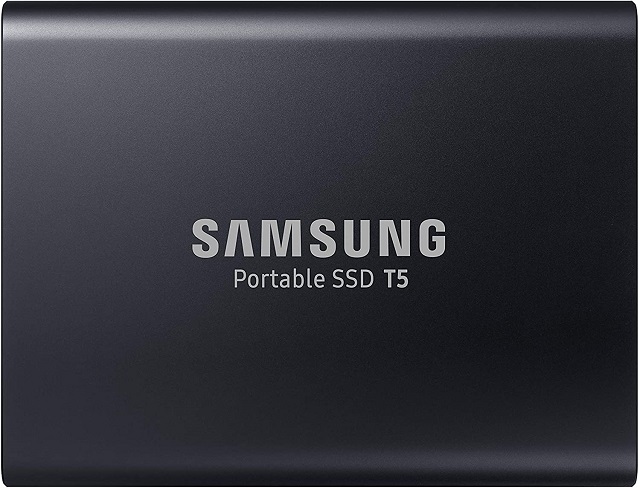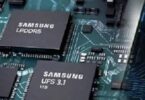This article lets you know about the solid-state drive, its function, the form factor, the SSD Form Factor, how to choose the right one, etc. Nowadays, Solid State Drives have become transformative to the whole storage market. You may face them hard to understand well enough while upgrading your device.
Understanding SSD Form Factor
In the market, only there are a few variety of SSD Form Factor available. In most cases, you will find the difference between the form factor and interface types. The Solid State Drives are becoming essential for the enterprise data centers and industrial environments. It is because the demands of workload are very high, and data speed access is also crucial.
SSD Form Factor Inside Story:
Both a hard disk drive and solid-state drive are storage devices and are used in similar cases. However, a hard disk drive comes with moving parts, whereas the other one has not. Besides, the solid drives are unable to save information on the magnetic platters. Apart from this, there doesn’t occur any head rotating over the platters that help to find data. Let’s know what is inside it and how it works.
What do Solid State Drives Do?
It works alongside the memory of your system as well as the processor for accessing and using information.
- Compared to traditional hard drives, these use different technology. With the help of technology, these can access data quickly and improve computer performance. It accesses information about your operating system, games, images, music, etc. For instance, you can access data from a spreadsheet and then make some fundamental edits.
- Sometimes, you ask your computer to open the spreadsheet. Then, the processor transfers the program data from the storage drive to RAM so that you can get access and use it for a short time. These transfer data very quickly and take hardly any time. It is only the amount of time that the drive needs for loading programs and files.
- After that, the processor accesses the information from memory. It can work as the computer’s bank of available workspace. After that, it uses the memory to “run” the program.
Along with fast working, these are durable also because of not having any moving parts. As a result, there is no risk of being broken or worn out while moving them around. Besides, these consume less energy that saves battery life. When you install any Solid State Drive, you can change almost every aspect of the system’s performance.
What Do You Mean By an SSD Form Factor?
While Solid State Drives replacing the hard disk drives, these should have such dimensions to fit into computer chassis or laptop drive bays. The two examples of Solid State Drive are 1.8” and 2.5” HDDs. These can be used with standard SATA connectors also. When you compare 2.5” devices with 1.8″ devices, the connector is thinner for 1.8” devices.
However, other than that, the drive doesn’t need to have the same shape as a typical HDD form factor. A PCIe SSD card solution looks like an add-in graphics card. Besides, as PCIe is the physical interface, it installs the drive similarly.
Flash memory chip is the most significant element of this type of drive. However, it relies on the number of flash chips it uses. Usually, manufacturers offer limitless options virtually while defining dimensions.
Storage Drive Specification:
JEDEC stands for Joint Electronic Device Engineering Council. It implies the technical standards for the electronic industry. On the other hand, JEDEC means the MO-297 standard. It is the one that gives us parameters for layout, connector locations, and dimensions of 54mm x 39mm Serial ATA (SATA). It allows you to use a similar connector as standard 2.5″ HDDs, but you can fit them into a smaller space.
The interface connector is the vital aspect of an SSD form factor. In the previous days, people used the same SATA connector used with HDDs. Gradually, the width of the Solid State Drives becomes smaller compared to the SATA connector. That is why people need new connectors day by day.
We know the Card edge connector as a part of the computer board used to plug into a computer. It is available in small designs that decrease both manufacturing and component costs. To reduce the price, you need to install merely a single female socket on the host. It works like a receptor for the edge of the printed circuit board of the solid-state drive. The original version of the 2.5″ and 1.8″ SATA connector needs both a male and female plastic connector for making a connection with a computer.
JEDEC refers to the MO-300 that comes in 50.8 mm x 29.85 mm dimensions. It uses a mini-SATA (mSATA) connector that is the same as the mini PCI Express. However, these two are not compatible electrically. The manufacturers of the solid-state drive have also used the same mSATA edge connector and board width. However, to offer higher capacity, they increase the length to support more flash chips.
Storage Medium:
The last but essential factor is the way you store data physically. Usually, two types of storage are available in any computer that is volatile and non-volatile storage. When the power goes off, the volatile storage data is deleted. The Non-volatile storage data remains still there. In the previous days, people generally preferred to have non-volatile storage.
When it was between the ’50s and ’60s, punch cards became the most common non-volatile storage medium. These look like simple card stock containing holes punched. After that, people started to use tape drives that came with large spools of magnetic tape. Then, people began to use hard drives and floppy disks. These use circular platters coated with magnetic material. People used solid-state memory also for storage purposes. Besides, flash memory was used by the USB sticks. It is the recent solid-state drive that uses significantly quicker NAND flash memory.
Flash Controller:
It is both the heart as well as the brain of the solid-state drive. The controller works as an interface between the host computer and the drive’s other components. For example, a host computer wants to share information with the solid-state drive. It is the flash controller that directs the flow of data. Thus, it confirms that the data is stored correctly. There exists a firmware that is used to manage the solid-state drive. Besides, it helps run processes running in the background like managing the flash file system, wear leveling, error correction, trim, garbage collection, etc.
Volatile Memory (DRAM Cache):
People use this small amount of memory as temporary storage of data. You can’t get this in all solid-state drives. The reason is that volatile memory needs the power to retain information. The firmware decides when you should flush information or move it from volatile to non-volatile flash memory. It means from non-persistent to persistent memory.
If suddenly power loss happens, the data in the cache can be lost or corrupted. So, it is better to have an adequate power failure protection mechanism.
Non-Volatile NAND Flash Memory:
In this case, the chips store and retrieve information persistently. These can retain information while power is off, and that is why these are non-volatile.
NAND Flash Memory Types:
The type of flash memory depends on every chip how much it can store data. SLC that stands for Single-level cell, can store only one bit of data on every cell. On the other hand, the Multi-level cell (MLC) can hold more than one bit of information. However, people generally use this with two-bit memory. The triple-level (TLC) and quad-level (QLC) cells can store 3 and 4 bits, respectively.
It is the ATP that implements a new updated firmware technology. The SLC Mode enables the MLC flash to work at the accessible price points. What makes it unique is that it doesn’t compromise performance, endurance, capacity, data retention, and many more.
Interfaces:
It is the one that connects a solid-state drive to the host. While doing this, it follows a particular “protocol.” Generally, interface implies the hardware transportation layer with current, voltage, and physical pin definition. On the other hand, the protocol means the set of rules, standards, command sets, and the drivers available between the storage and OS.
Always choose that interface that can transfer more information within a period, expand the system or network, etc. Latency means the delay that starts before data transfer and after the transfer instruction is sent. The hot-swap or hot-plug capabilities in the solid-state drive are also one of the determining factors. You need to consider all of the factors in enterprise usage. Here, we have given details of some commonly used SSD interfaces. Let’s take a look at these.
Serial ATA (SATA):
Recently, it is the prevalent interface that connects the drives to the host. The transfer rates of 1st generation SATA started at 1.5 Gb/s. Its recent version, i.e., SATA revision 3.0, offers a 6 Gb per second native transfer rate. It takes the help of the Advanced Host Controller Interface (AHCI) command protocol. The protocol is designed in such a way that you can use it for slower mechanical drives with spinning disks.
NVMe:
Its complete form is a Non-Volatile Memory express interface. NVMHCIS that stands for Non-Volatile Memory Host Controller Interface Specification is considered as an open logical device specification. The primary purpose of its usage is to access non-volatile storage media that has a connection with the PCI Express (PCIe) bus.
Interfaces designed at the time of physical platter drives (IDE/SATA/etc.) come with linear/serial input and output characteristics and different latency profiles. These were not for exploiting the individual parallel performance characteristics of non-volatile memory storage. The prime motive is to focus on the low latency and extensive internal parallelism of solid-state storage devices.
The interface design enables both host hardware and software to exploit the levels of reading and write parallelism. Therefore, it decreases I/O overhead and improves performance such as multiple long command queues, reduced latency, etc.
PCIe:
These drives take the assistance of the prime interface bus of the system. Usually, these cost high compared to other devices due to the additional development cost and faster memory. These help you write software/hardware layers for transferring them from PCIe protocol read/writes to solid-state memory access.
The PCIe devices generally have high transfer rates compared to other drive interfaces. For example, a device has an interface having PCIe 1.x or PCIe 2.x specifications. It implies that the device has a maximum of 250-500MB/s rates. However, Optane memory can have up to 1000’s of MB/s range. Before NVMe, it was the Intel Optane memory drives whose interface can go to the 2800MB/s range.
Serial Attached SCSI (SAS):
It is mainly for the high-performance enterprise requirements. The device is both backward compatible and interoperable with SATA and SCSI technologies. Due to this, you can connect a SATA drive to a SAS port. However, you are unable to connect a SAS drive with a SATA port. SAS can make the SATA transfer rate double and is compatible with the dual-port operation. Besides, it offers better data integrity compared to SATA.
Form Follows Function:
“Form factor” implies the physical configuration of any device. The Solid State Drives are available in different HDD sizes like 1.8″, 2.5″, 3.5″, and 5.25″. When it was 2010, people used it in ultra-thin mobile computers with its flash chips and controllers. Those were long, thin as well as narrow. Besides, these don’t have an enclosure. It is vital to select the right one that depends on whether you can fit it in the system chassis, the number of items you can fit, & whether you can change them without powering off the system or not.
Here, we have given some SSD form factors. Take a look into these.
Traditional HDD Sizes:
The 1.8″ size is for removable ultra-mobile apps, and both 2.5″ and 3.5″ for PC & enterprise systems. The 5.25″ is used less commonly than you can use for special-purpose apparatuses like backup devices. The 2.5″ drives with the SATA III 6 Gb/s interface come with a shock-resistant feature. You can use these in different temperature levels that make it perfect for enterprise and industrial apps. These enterprise apps need extraordinary performance, reliability, as well as endurance.
2.5-Inch SSD:
It is the standard size of the drive. You can use this inside the drive bay of most computers and laptops. Multiple users are there who replace the hard drives with this type. Whether it is HDD or SSD, this size is considered the standard one. Due to these drives, you don’t need to change the connecting interface cables. This process makes the transition more straightforward than before.
Solid State Modules:
M.2 NVMe:
You can get this available in a dual in-line memory module (DIMM) or similar form. These enable you to use a standard HDD interface like SATA with them.
M.2 SATA:
It offers improved performance as well as capacity while it reduces module footprint. These take the help of either SATA or PCIe for making connections.
You can get these available in different widths and lengths in the market. These come in soldered down or connectorized type or feature single- or double-sided components. The soldered down modules feature single-sided that you can use in low-profile applications. You need to know that these are not hot-swappable & hot-pluggable.
- ATP M.2 NVMe: It provides up to 1 TB capacity and can be used in a PCIe 3.0 x4 slot. The device offers a bandwidth of up to 32 Gb/s (8 Gb/s per lane). Compared to the data transfer speed of the previous-generation AHCI protocol, it is about 4-6 times.
- ATP M.2 SATA: It offers high-performance SATA 6 Gb per second. You can get these available in three different sizes that are: 2242, 2260, and 2280.
mSATA:
It comes with the PCI Express Mini form factor as well as the connector. You need to plug this into an existing PCIe Mini card slot. However, it works only when you connect this to a SATA host controller. You are unable to use a PCIe Mini card properly that is installed on a dedicated mSATA slot.
SlimSATA:
It is also known as Half-Slim SATA. The drive uses a 22-pin SATA pin connector that is used in 2.5″ SSDs. These drives are reliable mass storage devices. They offer a unique wear-leveling algorithm that helps increase endurance.
Flash Memory Cards:
These use flash memory and enable you to use it as removable or embedded storage. They are designed especially for the rigorous computing conditions in automotive applications and industrial environments. These are equipped with advanced wear-leveling and data integrity protection. What makes it unique is that you can use this in harsh operating environments with severe temperatures ranging from -40°C to 85°C.Some flash memory cards in ATP’s portfolio are as follows:- SD/SDHC/SDXC, microSD/microSDHC/microSDXC, CFast, and CompactFlash (CF) cards.
Embedded USB (eUSB):
You can get the embedded USB module available in the Universal Serial Bus (USB) standards. People use this as a boot drive for systems and applications.
These modules are perfect for industrial and rugged environments. As it features advanced wear leveling, you can use it for a long time. It comes with an ATP PowerProtector that helps to complete the last read/write operation when a sudden power loss occurs. Therefore, you can save the data safely to the NAND flash.
USB Drives:
We know a USB drive like a USB stick, thumb drive, pen drive, or USB flash drive. It is a flash-based storage device that you can connect with the host via a USB interface. People use this as external removable storage. You can use the USB drives in embedded industrial applications like boot drives. The ATP Nanodura ruggedized industrial USB drives are the perfect options for mission-critical computing. The construction allows you to tolerate high temperatures from -40°C to 85°C. Besides, it also helps resist water, moisture, dust, shocks, vibration, electrostatic discharge, and other environmental strains.
Which Storage is Suitable for Your Device?
Before purchasing the right SSD, you need to confirm which device you are going to use. Different drives are available for a laptop, desktop, or server. Here, we have given details on choosing the right one for the laptop, server, etc.
For laptops:
If you have a laptop, there may be space for one, two, or four 2.5-in. SATA drives. The laptop may have rooms for two M.2 slots and one 2.5-in. SATA drive or it has space only for one or two mSATA drives. A few laptops are there that contain only M.2 slots which are either SATA or NVMe slots.
That’s why if you want to update these with new drives, you need to know the type of slots it contains. According to these, you need to determine the type of solid-state drive. Any laptop made within the last 20 years or so always needs a 2.5-in. SATA drive. You can change these with 2.5-in. SATA drives such as the 860 EVO and 860 PRO.
For Desktop Systems:
Most users use the SATA connections even in the last few years ago. However, a few motherboards are available that are compatible with NVMe slots and “sleds.” The PCIe card is capable of holding up to four M.2 NVMe SSDs. Multiple apps are there that don’t get any improvement from SATA. On the other hand, the games, graphics creation programs, data mining, and other specialized applications can benefit the six times improved performance from the best NVMe drives.
However, multiple desktop systems are available that contain 3.5-in. hard drives. If you want, you can exchange them with solid-state drives. The inexpensive adaptors help you mount a 2.5-in. drive in a 3.5-in. bay. In both cases, these come with the same interfaces. All the SATA drives can use the same cable that you plugged into a 3.5-in. SATA hard drive.
Systems with a free 4x PCIe slot allow you to use a sled and one or more PCIe solid-state drives. However, the old motherboards that are not compatible with PCIe 3.0 or greater may not give you good performance with sleds. The older backplanes may not be compatible with the full speeds.
For Servers:
The latest models are available with 2.5-in. SSDs and NVMe SSDs designs. These are compatible with 20 2.5-in. NVMe drives as well as 36 M.2 SSDs. You need the same investigation like laptop and PC to update the older systems with recent drives. It relies on the type of interfaces that the previous drive was using. You need to exchange fit with solid-state drive hard models which come with the same interface.
Conclusion:
We hope you can now understand the form factors and interfaces. After knowing about these, you can get knowledge regarding the memory technologies behind solid-state drives. Various types of memory are there that can cause the effect to the performance as well as interface. You can get most drives designed with MLC, TLC, or QLC memory configurations.
XPoint memory is the latest one that you can use in Intel’s Optane drives. Every memory technology comes with some performance characteristics. Due to a few technologies, drives work slowly after getting full.
On the other hand, a few technologies are there due to which some drives become slow when these are half full. A few drives come with more extended MTBF reliability. You can use any other controller hardware to do better jobs with the inherent limitations.
Frequently Asked Questions:
- What are the three form factors of SDD?
Three form factors that define the drives are their size, the type of connection interface, and the physical space it needs in the computer.
- Which one is the most common form factor for SATA drives?
The 2.5-inch form factor is a prevalent one for solid-state drives.
- What is the purpose of solid-state drive?
It is a storage device of the recent generation that exchanges traditional mechanical hard disks using their flash-based memory.







